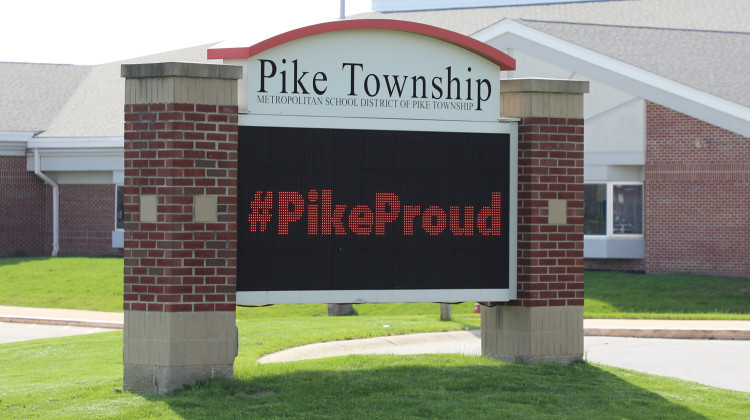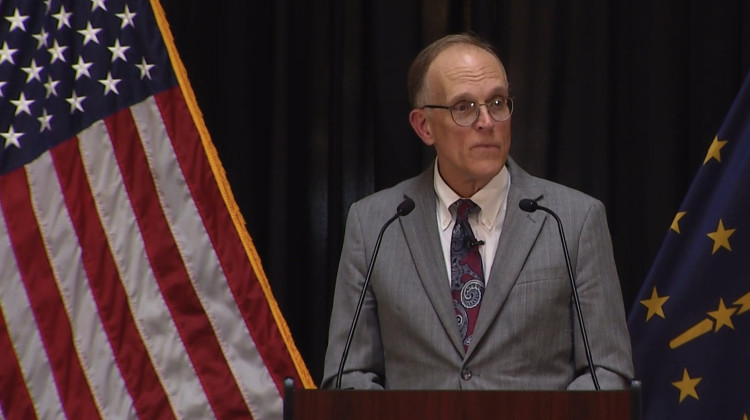Angela Barba was the first in her immediate family to graduate high school. And when the time came for her son Robert to follow in her footsteps, she says she found herself overwhelmed.
"I had no idea how I was going to get him into college," she says.
Angela, who had completed a two-year degree herself, says she wanted her son to be the first in the family to complete a four-year program. But she couldn't really offer any advice or guidance as to what schools to attend or how to apply for scholarships.
"I wish I could say that I helped Robert along with this information," Angela says. "But I had no idea how to even go get it."
And Robert understood that.
"I just knew that they didn't have any experience," he says. "I knew it was up to me to figure these things out."
Hispanic students are significantly more likely than African-Americans or whites to be the first in their families to graduate from college.
Robert Barba eventually found a scholarship and enrolled in the University of Colorado. But for nearly half of all Latino students, the outlook is quite different.
According to a report by the Pew Research Center, only 56 percent of young Hispanic students go to two-year schools — while, for non-Hispanic whites, the same figure is 72 percent. For blacks and for Asian-Americans those numbers stand at 66 and 79 percent respectively.
"Fact of the matter is students who go to community college are much less likely to catch the prize." says Richard Fry, a Senior Researcher at the Pew Research Center. "They will be less likely to complete, on average, if they start at a two-year college rather than a four-year school."
In 2012, after tracking a group of high school sophomores for a decade, the U.S. Department of Education found that those who had enrolled in four-year universities were over twice as likely to have graduated with a bachelor's degree as those who enrolled in two-year schools.
And according to Fry's research, while 40 percent of whites will have attained a bachelor's degree by their late twenties, the same is true for only 16 percent of Hispanics.
Daniel Umana, a student at Montgomery College in Takoma Park, Md., says there are sharp differences between his school and an four-year institution such as the University of Maryland. He says the environment there is different, the people are easier to relate to, and if he went there, he'd be able to visualize his goals more clearly.
"I'd definitely be more engaged simply because I'd be at a four-year school and I'd be working towards a bachelor's, not just an associate's," says Umana.
But just what makes four-year programs so much more effective remains up for debate. And why Hispanic students so often diverge from this path is an even more complicated question.
Last year, a report by the Center for Urban Education at the University of Southern California tracked students from the state's top high schools and found that, even within this group, Hispanics were a lot more likely than others to enroll in community colleges.
One of the major reasons may be cost. Average tuition in four-year schools is more than twice as high as it is for community colleges.
And research shows that Latinos are more averse to incurring in debt, and on average, receive lower financial aid awards. This puts extra pressure on them to shift their focus from education to working.
But these disparities could stem from a lack of information about how to tap certain resources, such as grants or scholarship funds.
Angela Barba says she and her son — who's now a journalist and college graduate — have helped others in their family by walking them through applications for admissions and financial aid. Robert was even able to put one of his cousins in touch with an adviser that had helped him 14 years ago. That cousin is now a freshman at the University of Colorado.
"When you're a first generation graduate you walk away with a sense of responsibility," Robert says. "This is not just yours — now you have to pay it forward. You have to work for your family too."
Today, many community colleges offer special programs that help Hispanic students. These range from intensive classes to help them improve their English, to centers that teach them how to apply for non-conventional forms of tuition assistance.
But the question remains on how to keep the majority of these students oriented — dead-set and focused on a prize that might take them 4 or 5 years to attain.
The key, Angela says, lies in providing the young with success stories that are close to home. She says many of their younger relatives see Robert as an example.
But Robert, laughing, says he encourages them to look beyond.
"I tell them, 'don't be like me, be like you,' " he says. " 'I want you to be your own person and exceed what I did.' "
9(MDEwMDc1MzM3MDEzNDczOTA0MDc1MzViMQ001))
 DONATE
DONATE








 View More Programs
View More Programs

 Support WFYI. We can't do it without you.
Support WFYI. We can't do it without you.